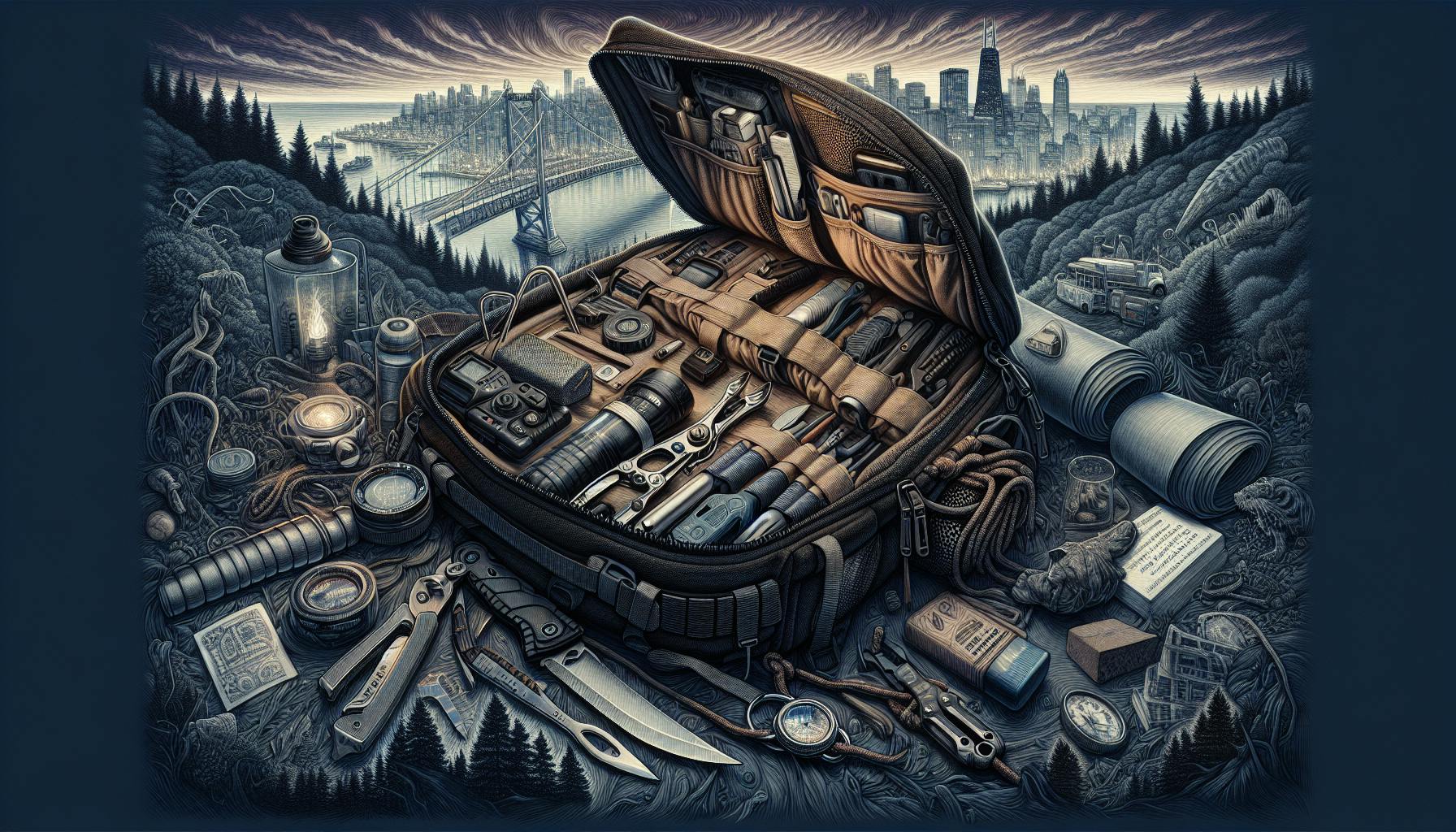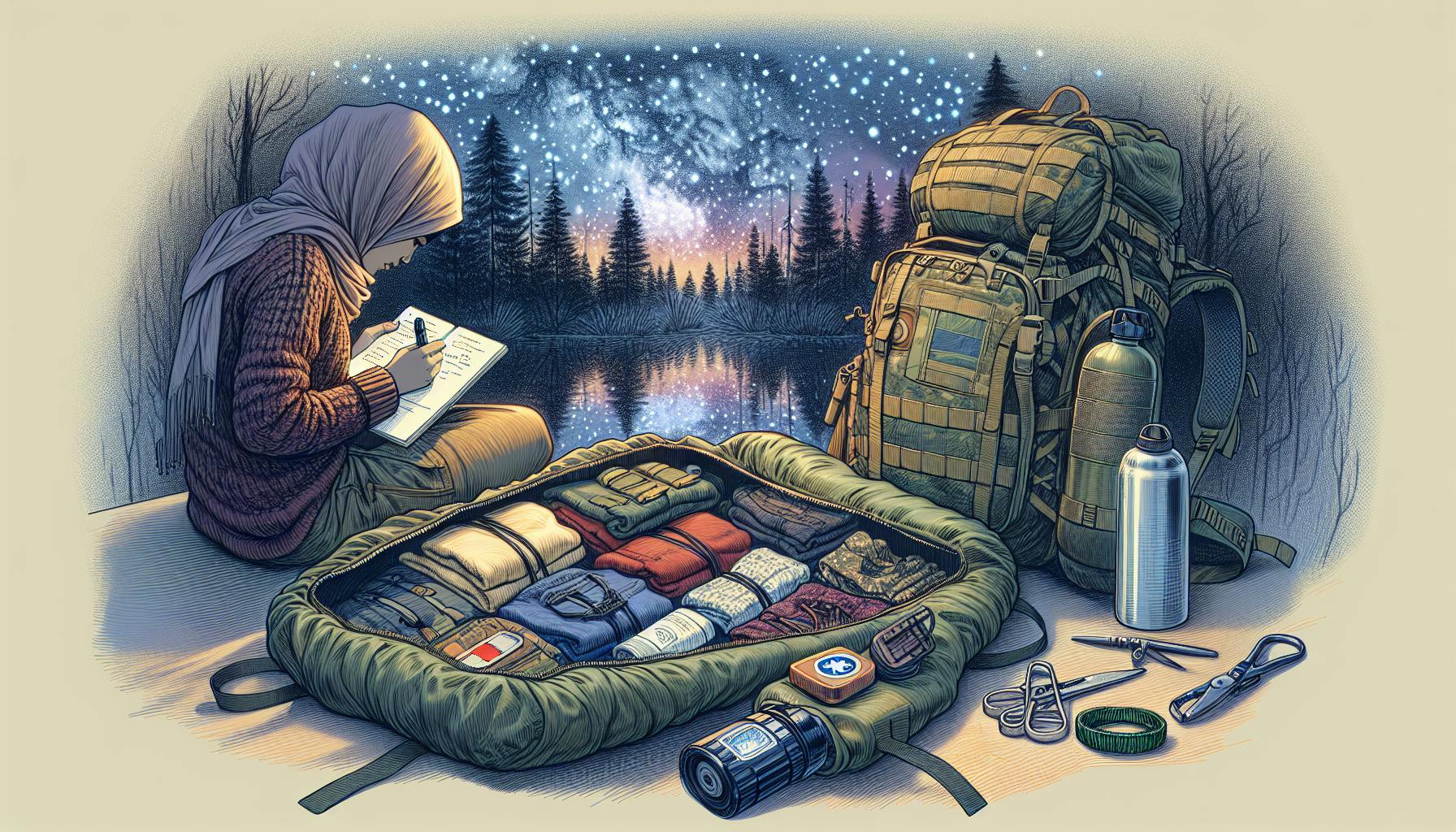Introduction
When disaster strikes, being prepared with the right supplies can make all the difference between barely surviving and comfortably riding out the storm. Having a robust, well-stocked SHTF (Sh*t Hits The Fan) list ensures you have all the essentials to withstand emergencies and become self-reliant when infrastructure fails. While terrifying to think about, natural disasters, economic collapse, pandemics, civil unrest, cyber attacks, and other SHTF scenarios are very real threats facing us today. Stocking up on supplies now provides invaluable peace of mind that you and your family will be ready for whatever comes your way. This comprehensive checklist covers the key categories of supplies you'll need, including food, water, medical, tools, and more. Use it to methodically shop ahead of time so that you're fully prepared for any emergency.
What is SHTF?
SHTF refers to any catastrophic disaster that severely disrupts normal society. Examples include:
- Natural disasters - Hurricanes, earthquakes, floods, blizzards, wildfires
- Manmade disasters - Economic collapse, EMP attack, nuclear event, cyber attack
- Health crises - Pandemic flu, viral outbreaks, anti-biotic resistance
- Societal breakdown - Widespread riots, hyperinflation, food/water shortages, civil unrest
- Supply chain disruptions - Critical infrastructure and delivery systems are halted
During SHTF situations, everyday services and infrastructure can be decimated for long periods. Having your own substantial stockpile becomes essential when you must rely completely on yourself and can't count on things “returning to normal” anytime soon. Preparing now helps ensure you can survive and adapt no matter what happens.
Creating Your Custom SHTF Shopping List
Make an organized checklist catered to your family's needs. Categorize items by type - food, water, medical, etc. Consider each family member's specific requirements like medications, infant supplies, pets. Keep your evolving list handy to reference easily when supply shopping. Having a plan prevents desperate last-minute scrambling during a crisis.
Food & Water - Stockpile for Sustenance
Food and water are the most vital supplies for survival. Aim to stock at least a 3 month supply of shelf-stable food and a 6 month supply of water per person, more if possible. Opt for nutritious, non-perishable foods like rice, beans, oats, canned fruits and vegetables, jerky, and nutritious survival food bars. Store additional potable water for drinking, food preparation, hygiene and sanitation. Always keep a 72-hour food/water bug out bag ready to go.
Water Storage Tips
- Store at least 1 gallon per person daily for 6 months
- Rotate bottled water every 6 months to keep it fresh
- Harvest rainwater with barrels, buckets and containers
- Stock water filters, purification tablets and bleach
- Purchase transportable 5-7 gallon jugs with dispensing taps
- Set up large 55-100 gallon water collection drums
Essential Food Storage Items
- Rice, beans, oats, wheat - high-calorie staples
- Canned goods - meat, fish, vegetables, soups
- Nut butters, dried fruit, survival food bars
- Broths, shelf-stable milk, nutritional shakes
- Vitamins, medicines, special dietary needs
Medical Prep - Stock Up on Health Supplies
Medical issues rapidly arise without hospitals or pharmacies. Stock trauma supplies, OTC medications, prescription medications, copies of medical records. Learn skills like CPR, first aid, suturing. Have instruments like scalpels, clamps.
First Aid Supplies
- Bandages - gauze, tape, wraps, tourniquets
- Antibiotics - topical creams, oral medications
- Medications - pain relievers, antihistamines, antidiarrheals
- Tools - scissors, tweezers, thermometers, syringes, gloves
- Sterile dressings, safety pins, instant cold packs
- Ointments - antibiotic, burn, anti-fungal, anesthetic
- Eyewash, hydrogen peroxide, saline solution
Over-the-Counter Medications
- Pain relievers - acetaminophen, ibuprofen
- Allergy - antihistamines, epi-pens, inhalers
- Digestive - antacids, laxatives, anti-diarrheal
- Cough and Cold - cough syrup, decongestants
- Antibiotics - topical triple antibiotic ointment
- Medical devices - insulin, testing strips, CPAP machines
Sanitation - Maintain Health Standards
When infrastructure is compromised, maintaining sanitation prevents illness. Essentials include toilet paper, garbage bags, bleach, soap, feminine hygiene products. Set up hand washing stations, latrines. Have diapers if needed.
Bathroom and Hygiene Supplies
- Toilet paper, paper towels, portable toilet
- Feminine hygiene products - pads, tampons
- Soap - antibacterial hand, body, dish, laundry
- Oral hygiene - toothpaste, floss, mouthwash
- Shampoo, deodorant, razors
- Diapers, wipes if needed
- Garbage bags
Cleaning and Disinfecting Items
- Bleach, disinfecting wipes and sprays
- Hand sanitizer, gloves, face masks
- Cleaners - vinegar, baking soda, soap
- Mops, buckets, brushes, rags
- Protective gear - goggles, particle masks, gloves
Tools & Equipment - Stock Up on Gear
Manual, non-electric tools are key for building, repair, self-defense, gathering firewood and other tasks. Have proper safety gear. For powered options, stock up on fuel, batteries and manuals. Learn to use tools safely and effectively.
Hand and Power Tools
- Axes, hatchets, saws - for construction, firewood
- Hammers, wrenches, screwdrivers, pliers
- Shovels, pickaxes, hoes - for digging latrines
- Toolkits with assorted repair items
- Chainsaw, generator - store fuel and oil
Cooking Devices
- Camp stove, propane, isobutane
- Cast iron cookware for cooking over fire
- Grill, charcoal, lighter fluid
- Canned heat stove as backup
- Lighters, matches, firestarters
Lighting - See in the Dark
Stock reliable lighting that doesn’t require electricity. LED flashlights, battery lanterns, oil lamps, candles. Have fuel, spare batteries or crank charging options. Headlamps allow hands-free use.
Flashlights & Headlamps
- LED flashlights - long-lasting, durable, bright
- Headlamps - hands-free convenience
- Waterproof, impact-resistant models
- Crank, solar or rechargeable batteries
- Stock plenty of spare lithium batteries
Alternative Light Sources
- Battery-powered lanterns
- Oil lamps, kerosene lanterns
- Reflector lamps, candle lanterns
- Beeswax, soy candles, kerosene
- Fire starters - matches, lighters, flint
Self-Defense - Be Ready to Protect
In a collapse, you may need to defend yourself, loved ones and supplies from desperate people. Focus first on lawful, non-lethal options like pepper spray, alarms and blunt weapons. Use lethal weapons only as an absolute last resort if facing imminent death/serious bodily harm. Consider taking professional self-defense and gun safety courses now to prepare.
Non-Lethal Self-Defense Tools
- Pepper spray - disorients threats from a distance
- Tactical flashlight - disorienting bright light
- Alarms, whistles - draw attention and deter threats
- Baseball bat, axe handle - blunt force if attacked
- Tactical pen - sturdy jabbing tool if needed
Lethal Force Precautions
- Firearms require extensive safety training
- Follow all local laws and regulations
- Lock guns securely away from children
- Consider a small safe for quick access
- Exhaust ALL other options before resorting to lethal force
Communications - Stay in Touch
Two-way radios allow short-range communication when cell networks fail. Have a wind-up or battery powered radio to get news. Store charged batteries or generators as backup power. Use whistles, flares and mirrors to signal.
Short-Range Comms
- Walkie-talkies - for communication within a few miles
- FRS/GMRS radios - several mile radius
- Crank radio - access news and emergency alerts
- Weather band radio - storm notifications
- Whistles, air horns - to signal need for help
Long-Range Options
- HAM radio - requires FCC license
- Satellite text messenger like SPOT Gen3
- Satellite phone if cellular networks are down
- Solar or hand crank chargers for devices
Financial Preparedness
Keep cash on hand in case electronic payment systems fail. Small bills are better for bartering. Have some precious metals or coins. Store any important documents in a waterproof case.
Financial Prep Items
- Cash - in small denominations
- Silver, gold - for bartering if needed
- Spare debit/credit cards - activate if banks reopen
- External hard drive with document backups
- Waterproof USB drive for important records
Survival Skills - Learn to Be Self-Reliant
Equally important as supplies are the skills and knowledge to use your preps and endure a collapse. Take classes now or use online resources to gain expertise in:
- Basic first aid, CPR and emergency medical
- Navigation and orienteering without GPS
- Hunting, fishing, trapping, foraging for food
- Fire making, food preservation like smoking meat
- Survival shelter construction with natural materials
- Water purification, rain catchment principles
No matter how well you individually prepare, building community with neighbors is also key. Look out for each other when times get tough. Survival is a team effort.
Final Thoughts
This comprehensive SHTF checklist covers the essential categories your family needs not only to survive disasters but to thrive. The key is tailoring your supplies to your situation and stocking up now before an emergency arises. Rotate stock as needed. With the proper skills and preparations, you can weather any storm. Stay vigilant and prepared, friends.


